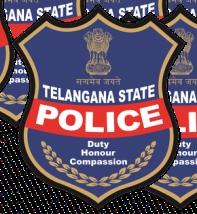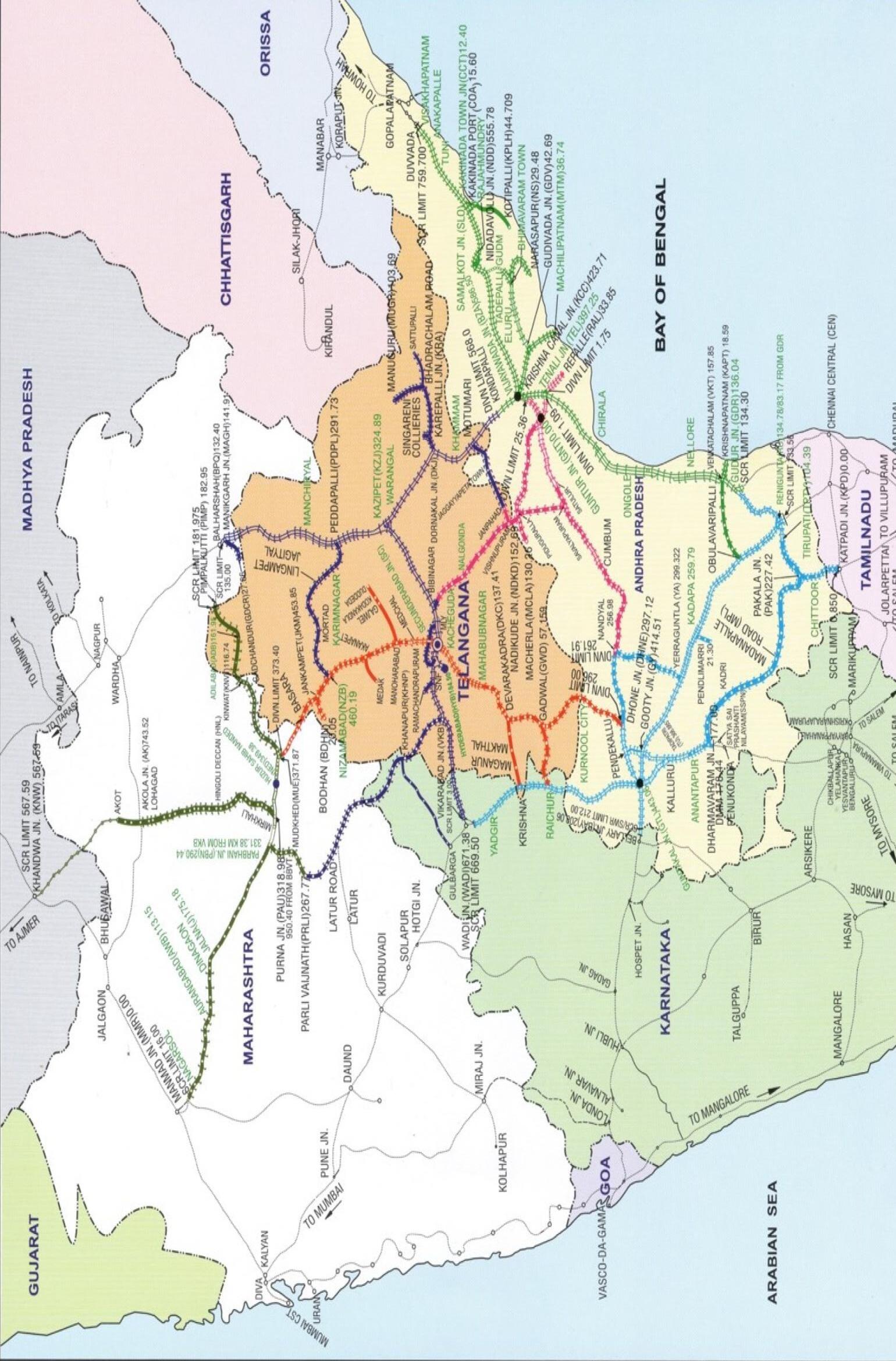











Maharashtra 512

Minors - 49 (5 Boys; 44 Girls)
Adults - 463 (1 Men; 462 Women)
Telangana 439

Minors - 32 (24 Boys; 08 Girls)
Adults - 407 (14 Men; 393 Women)

Andhra Pradesh 171
Minors - 101 (16 Boys; 85 Girls)
Adults - 70 (17 Men; 53 Women)
Indian Penal Code Section 370 denes Human Trafficking is the recruitment, transportation, transfer, harbouring or receipt of people through force, fraud or deception, with the aim of exploiting them for profit.
• Men, women and children of all ages and from all backgrounds can become victims of this crime, which occurs in every region of the world.
• The traffickers often use violence or fraudulent employment agencies and fake promises of education and job opportunities to trick and coerce their victims.
• Bharatiya Nyaya Sanhita Section 111 has recognized trafficking for prostitution as an organized crime.
• Human trafficking is the third largest organized crime in the world.
• $150 billion + per year, making it one of the most lucrative criminal activities.
• 40.3 million trapped in modern slavery.
• 4.8 million in forced sexual exploitation, including prostitution, pornography.
• A total of 2250 cases of Human Trafficking were registered in 2022.
• Atotal of 6036 victims have been reported to be trafficked.
• A total of 6693 victims have been rescued from the clutches of traffickers.



SexTrafficking : Forced prostitution, pornography, sex tourism. LabourTrafficking : Forced labour, bonded labour, use of children in hazardous industries domestic work.
ChildTrafficking : Forced labour, sex trade OrganTrafficking : Organ trade, begging rackets.
• Poverty and lack of economic opportunities.
• Gender discrimination and violence against women.
• Lack of access to education.
• Natural disasters and conflict situations.
• Social exclusion and marginalization.
Traffickers exploit these socio-economic vulnerabilities, luring victims with promises of employment, better life, only to trap them in cycles of abuse and exploitation.
Addressing root causes through empowerment, awareness and robust law enforcement is key to combating this menace in India.
 Sexual exploitation
Organ removal
Forced begging
Child soldiers
Forced marriage
Forced labour
Debt bondage
Domestic servitude
Sexual exploitation
Organ removal
Forced begging
Child soldiers
Forced marriage
Forced labour
Debt bondage
Domestic servitude

• Groups travelling under surveillance of handlers
• Children accompanied by unrelated adults
• Last-minute travel without luggage/belongings
Offering job opportunities through informal channels “Receivership” system - Handing over victims to handlers, use of Social Media, online recruitment.
• Confiscation of travel/identity documents
• Restrictions on communication and movement
• Show of physical violence, threats
Vigilant observation of such indicators at railway premises can enable timely identification and interception of potential trafficking cases. Multi-stakeholder coordination and passenger awareness are crucial
- Routes connecting poorer source states/regions to cities.
- Rail networks near borders with human trafficking corridors.
- Station areas with lack of monitoring/visible policing.
- Areas densely populated by marginalized groups.
Traffickers exploit lack of awareness and accessible transportation to easily move victims across state borders. Improved surveillance and coordination along key rail routes is critical. By identifying and securing these trafficking hotspots and vulnerable areas, Indian Railways can disrupt criminal networks and prevent human exploitation
- Physical and behavioural indicators of potential trafficking victims.
- Signs of traffickers' modus operandi.
• Appearing fearful, anxious, submissive
• Avoiding eye contact, restricted mobility
• Unable to answer basic personal questions
• Not making eye contact
• Language spoken different than the accompanying adult
• Poor hygiene, lack of medical care
• Bruises, injuries, signs of physical abuse
• Malnourished, fatigued appearance
• Lack of personal belongings or travel documents
• Seemingly sleeping throughout the journey/druggged



- The Immoral Traffic (Prevention) Act, 1956
- Sections 366A, 366B, 370, 370A of Indian Penal Code
- The Child Labour (Prohibition and Regulation) Act, 1986
- The Juvenile Justice (Care and Protection of Children) Act, 2015
- The Bonded Labour System (Abolition) Act, 1976
- POSCO

- UN Convention against Transnational Organized Crime
- Protocol to Prevent, Suppress and Punish Trafficking in Persons
- SAARC Convention on Preventing and Combating Trafficking in Women and Children
- Rigorous imprisonment up to life term
- Financial penalties and attachment of properties
- Offenses made non-bailable
- Provisions for victim compensation and rehabilitation
For instance, trafficking of children attracts a minimum of 7 years' rigorous imprisonment under the Bharatiya Nyaya Sanhita.
India has strengthened its legal framework through amendments and new legislation in recent years to combat all forms of trafficking. Strict enforcement is key.
In a significant step towards eradicating human trafficking, the Railway Protection Force (RPF) has signed MOUs with two
• Bachpan Bachao Andolan in 2022.
• National Commission for Women in 2024.


The collaboration aims to
Share critical information and intelligence
Build capacity of RPF personnel and Railway staff Jointly combat trafficking through “Operation AAHT”
RPF, BBA & NCWIndia Join Forces for #TraffickingFreeNation

• Rescued over 50,000 children from trafficking since 2018 under "Operation Nanhe Farishte".
• Launched "OperationAAHT" for targeted anti-trafficking operations.
• Established 740+Anti-HumanTrafficking Units across India.

• Rescue of victims from the clutches ofTraffickers, apprehension of traffickers.
• Intensive drives are being conducted against Human Trafficking through trains coming from East & North India over South Central Railway.
• Conducting decoy checks by the teams under the leadership of Post incharges.
• RPF is tracking the movements of traffickers by collecting the inputs from BBAAuthorities to their arrest by GRP.
• In 2022, 46 victims were rescued with the arrest of 9 traffickers, while in 2023, 507 victims were rescued with the arrest of 184 traffickers, marking a remarkable 1002% increase in rescue and arrest of traffickers.
• All drives with an objective of Rescuing children in need of care and protection.
• RPF is acting like a bridge between Child Help Desks / NGOs and parents for repatriating the missing children.
• Over 3000 children were rescued over South Central Railway during the year 2022 & 2023.
Together, we can dismantle trafficking networks and create a #TraffickingFreeNation
Here are the key roles and responsibilities of the Railway Protection Force (RPF) in combating human traffficking
Given its pan-India presence and mobility across states, RPF plays a crucial role in:
- Identifying potential trafficking victims and perpetrators at stations/trains.
- Conducting rescue operations and interceptions.
- Gathering intelligence on trafficking routes, trains and networks.
- Creating awareness among rail passengers and staff.
To enhance effectiveness, RPF actively collaborates with Law Enforcement Agencies:
- State police, Anti-Human Trafficking Units (AHTUs).
- Central agencies like CBI, NIA for interstate cases.
- Border guarding forces at vulnerable crossing points.
• NGOs working in victim rehabilitation and prevention.
• Child rights organizations like Bachpan BachaoAndolan.
• CWC, DCPU/ChildLine, Labor departments, legal agencies for victim support.
• Regular Coordination and convergence meetings with stakeholders at unit level/Division Level.
• Railway Childline for coordinated rescue and care.
• Ensure to take legal actions (FIR/ GD) at GRP in all the Rescue operations in coordination with BBA - Follow up with BBA, CWC, DCPU for further rehabilitation of rescued children.
Through robust coordination and intelligence sharing, RPF aims to strengthen security, disrupt trafficking networks and provide victim assistance across India's rail network
Victims will immediately ask for help and identify themselves
Only females are trafficked
Only children are trafficked
Due to an extreme lack of trust, self-blame, shame, fear of arrest, threats of harm to family and/or other "grooming" methods used by the traffickers, victims tend not to immediately ask for help. This allows trafficking to occur in the open.
Men and boys are also victims of trafficking. Most males are not only trafficked to perform acts of labour but also trafficked in the commercial sex industry.
It is a mis concept that only children are trafficked. Even adults are subjected to trafficking for various reasons.
Traffickers target victims they don't know Traffickers need not be unknown people to the victims. Sometimes, it is the close relatives or friends of the victims who turn out to be traffickers.
Human trafficking involves moving, travelling or transporting a person across state or national borders
If children are being trafficked with the consent of parents, that will not fall under the purview of trafficking
Trafficking can happen within a town or city or state too. It is not necessary that trafficking involve cross border movements across countries or states
Even if parents are giving consent for bonded labour or sexual exploitation of their children or for trafficking in any other form, still it will be considered as a form of trafficking only despite the consent of the parents.
Trafficking victims are held against their will, locked up, and physically unable to escape captivity.
Persons who knowingly engage in illegal activities cannot be considered victims of trafficking
Although this is sometimes the case, more often, victims stay in trafficking situations for many reasons. Some lack the basic necessities to physically get out (like money, transportation, or a safe place to live), some are afraid for their safety, and some have been so effectively manipulated that they do not realize they are under the control of a predator.
Initial consent to commercial sex or labour prior to acts of force, fraud or coercion is not relevant to the crime. If a person is forced, defrauded or coerced to perform commercial sex acts or labour against his or her will, he/she might be a victim of trafficking.







